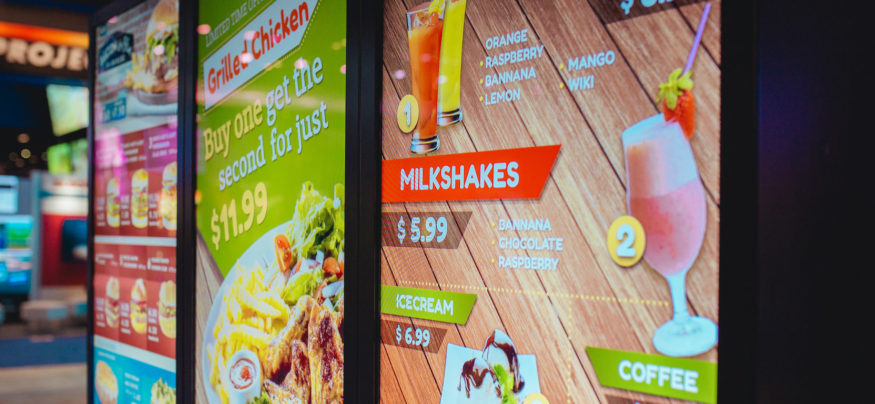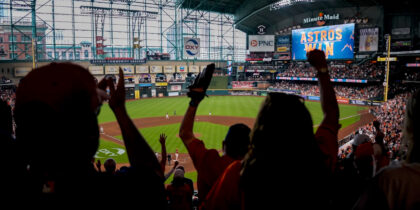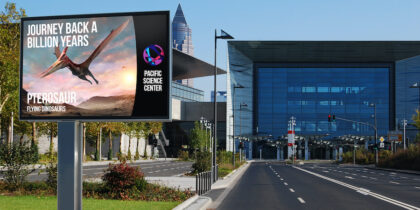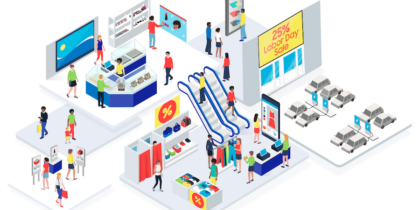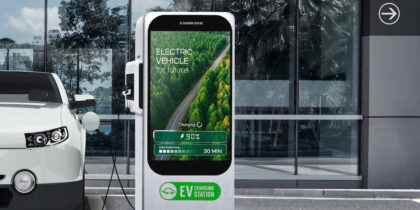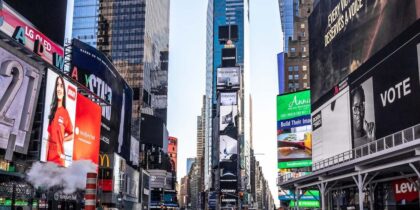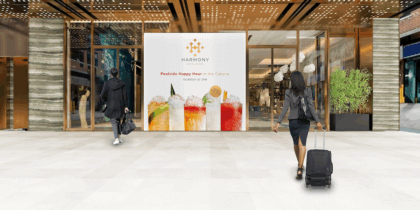Outdoor digital signage offers many ways to improve the customer experience in the quick-service restaurant (QSR) industry, far beyond enhancing the way digital displays look in the drive-thru lane.
Super-bright, reliable outdoor digital signage displays are replacing static, back-lit posters and menu boards, and it’s the smart, real-time content running on those screens that’s changing the business for QSR industry operators and their customers. Messaging delivered to the screens, which motorists see as they stop and go along drive-thru lanes, is being customized. Car by car and SUV by SUV, it optimizes inventories and speeds up the process while increasing order sizes. As a result of this improved customer experience, the QSR industry is seeing real financial benefits from implementing these digital displays.
The Rise of Outdoor Digital Boards
We’ve seen a big uptick in both interest and rollouts for sunlight-readable, weatherproofed outdoor digital signage displays, because QSR operators now have the experience, insights and tools to optimize sales out of those drive-thru lanes. That’s a big deal, because some QSR operators see as much as 70 percent of their sales from people who never walk in the store.
What’s going outside with drive-thrus is playing off what’s already happened inside many regional and national QSR chains. Backlit, printed plastic menu posters have been replaced by digital displays that are brighter, offer eye-catching motion graphics and can be automated or changed dynamically with a few keystrokes.
QSRs rarely talk about their metrics, but the wholesale switch-out of print to digital across much of the industry suggests a strong business case exists.
Financial Benefits
We recently commissioned Forrester Consulting to develop a total economic impact model for our outdoor digital menu boards, looking at the cost savings and business benefits derived from screens in drive-thru lanes. Based on interviews with two chains using outdoor menu boards and 150 stakeholders, and working off a model for a composite organization, the study suggests huge benefits over the five-year operating life of typical outdoor screens, including 196 percent ROI, 11-month payback and a 2.5 percent increase in average order value. For a 10 location pilot, increased customer volume, increased order value and improved promotion conversions resulted in a more than $1.4-million profit increase, while savings on labor, administration and printing expenses totaled more than $1 million.
The model ran all the operating costs (including equipment, software, creative and resources) and matched that against a conservative estimate on anticipated benefits from increased average sales, increased conversion rates on promoted items, higher volume of customers due to shorter wait times, reduced labor and printing costs, reduced food waste and dramatic reductions in printing and related costs.
The ROI climbed significantly in the model as the size of the outdoor display network grew because of the economies of scale.
Save Costs with Digital Signage
Help build a use case for outdoor digital menu boards for your business. Download Now
The Emergence of Smart Drive-Thrus
Top QSRs are tapping into business intelligence technologies such as camera-based analytics, and internal payment and management systems to optimize the selling opportunity that already looks strong when using conventional marketing. Here’s a scenario for when vehicles turn into a smart drive-thru lane:
- A camera scans the approaching vehicle, using pattern detection software to read the license plate and number, make and model of vehicle, and gender and age ranges of the motorist and passengers.
- A sensor reads whether the motorist has a loyalty app on their smartphone for that restaurant.
- A sensor analyzes overall traffic flow in the lot and the lane.
Algorithms are then used to analyze that anonymous information in real-time, and provide clues about what’s optimal to market to that car at that time, based on established customer patterns. The artificial intelligence “knows” — based on historical user patterns — that a female driver with children, in a large domestic SUV, has certain ordering and upsell tendencies. The system also knows, based on real-time sales data and inventory levels, that certain items are under-performing and would benefit from extra promotion.
So when that SUV rolls in view of the “pre-sell” display, and then the menu and order stations in the drive-thru lane, the content management software — based on all that data — serves files to the displays that drive promotions tuned to that car. Even certain targeted items may have shifted on the screen, or the fonts grown subtly in size. Behind the SUV, the process repeats with the new vehicle, though the promotional messages may be different. It sounds like something from the future, but this process is already being applied at some major QSRs.
Just as digital displays are now standard inside QSRs, they’re now also becoming the norm in drive-thrus. Operators are no longer talking about trying out digital; they’re talking about rollouts. Because of the enhanced, personalized customer experience digital menu boards bring, QSRs are in a position to upgrade their old displays and start reaping significant financial benefits from these new digital displays.
Outdoor digital signage is providing benefits to a wide variety of industries, such as enhancing the customer experience at banks.
